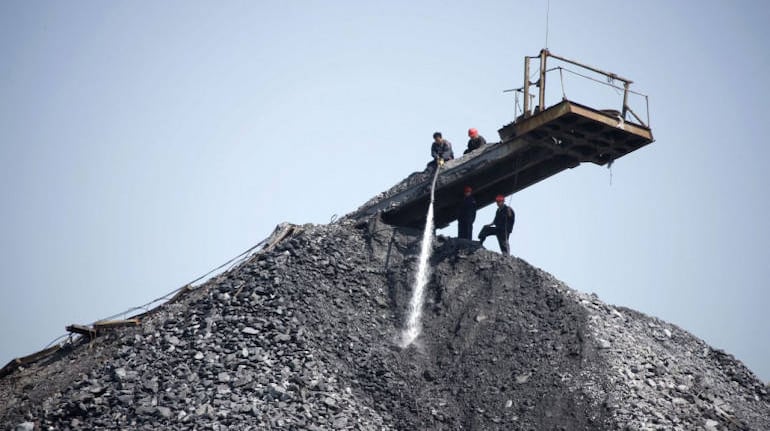



Indian power utilities are struggling with dwindling coal supplies at a time when power demand has scaled up but the government faces a catch-22 situation as it is unable to significantly increase the number of railway rakes to transport coal to power units as it would hurt the supply chain of other sectors witnessing a pick-up in demand.
As on April 18, as many as 81 of 150 power plants running on domestic coal had critically low coal levels, and many of them cited lack of rakes as the key reason. Another 11 imported coal-based power plants also had critical levels of coal.“For the last three years, power consumption was stagnant so the fact that Coal India’s production had not increased did not hurt. But in FY22, coal consumption has grown by 8 percent, and Coal India’s production has not grown significantly to address that. Then there is the second problem of a severe shortage of rakes available. Almost 60 million tonnes of coal is lying with Coal India but cannot be transported,” Debasish Mishra, partner & leader (energy), Deloitte India, told Moneycontrol.
An inter-ministerial sub-group is monitoring the coal situation closely as many states have already been forced to undertake power cuts and the situation is likely to worsen as the summer heat increases. The ministries of coal and power have sought help from the Ministry of Railways to make more rakes available to transport coal, but the railways is faced with the challenge to divert more capacity towards the power sector without disrupting the supply chain for other sectors. “We have met the allotment of rakes to thermal power plants as requested by the government, and are constantly working on increasing supply to thermal power plants. Nearly 45 percent of all rakes available are used for the supply of coal at the moment and as more rakes are made available these will be used for coal supply as well,” a member of the railway board told Moneycontrol.The railways has increased the number of rakes for the supply of coal to 410 per day in April to expedite the supply of coal to power plants from 305 rakes per day in September. The 410 rakes dedicated to coal transport account for around 45 percent of the maximum capacity available with the Indian Railways on a daily basis.A senior executive at Coal India Ltd said that even at 410 rakes per day, this remains a big bottleneck. But the railways face constraints too.
“If the rake allotment for the supply of coal is increased by 5-10 percent then there will be a shortage of cement and steel at a time when construction is at its fastest pace,” the railway board member cited above said. Stop-gap measures On its part, Coal India increased its supplies to thermal power stations by 14.2 percent year-on-year to 1.64 million tonnes (MTs) during the first half of April to address the increasing power generation. The company, which accounts for 80 percent of the domestic coal output in India, said that it is heading for its highest April production ever. Experts estimate it may still fall short of the requirement.“The escalating power demand, driven up by the post-pandemic economic buoyancy and hotter than normal summer, seem to dwarf the upsurge in supplies,” Coal India said in a statement on April 19.
The country’s total power generation was 9.5 percent higher, at an average of 4.53 Billion Units (BU), till April 15, 2022, over the same period last year. The increase was 400 million units per day against the average generation of 4.13 BU for the comparative period, driven by unusually hot summers and pick-up in industrial demand.While the government is pushing companies to scale up coal imports, the international coal prices have been rising and show no signs of cooling off which has put further pressure on domestic coal producers and the transport infrastructure. Many thermal power plants are also not connected with high-speed railway lines, or have not maintained their tracks properly which has led to delays in the supply of rakes to these locations.Another government official said that the average loading time at thermal power plants is around 6-7 hours at the moment. If the loading time is halved to around 3-4 hours, rakes can be reused and the supply can be increased even more, especially in shorter distances. “The coal companies have to focus on reducing the loading time at colliery sidings which is very high at some sidings. Reducing the detention of all rakes at coal sidings to 3 hours or less will generate additional empties to the tune of 3 to 4 rakes per day which can be gainfully utilised for more loading of coal,” the official observed.To tide over the intense demand, Coal India has made available additional 8.75 MTs of coal to state and central generation companies lifting through rail-cum-road mode till May 31.As a stop-gap measure, NTPC and other state utilities are also diverting rakes to power plants which have critically low coal availability, but industry players foresee more challenges going ahead.
Discover the latest Business News, Sensex, and Nifty updates. Obtain Personal Finance insights, tax queries, and expert opinions on Moneycontrol or download the Moneycontrol App to stay updated!
Find the best of Al News in one place, specially curated for you every weekend.
Stay on top of the latest tech trends and biggest startup news.